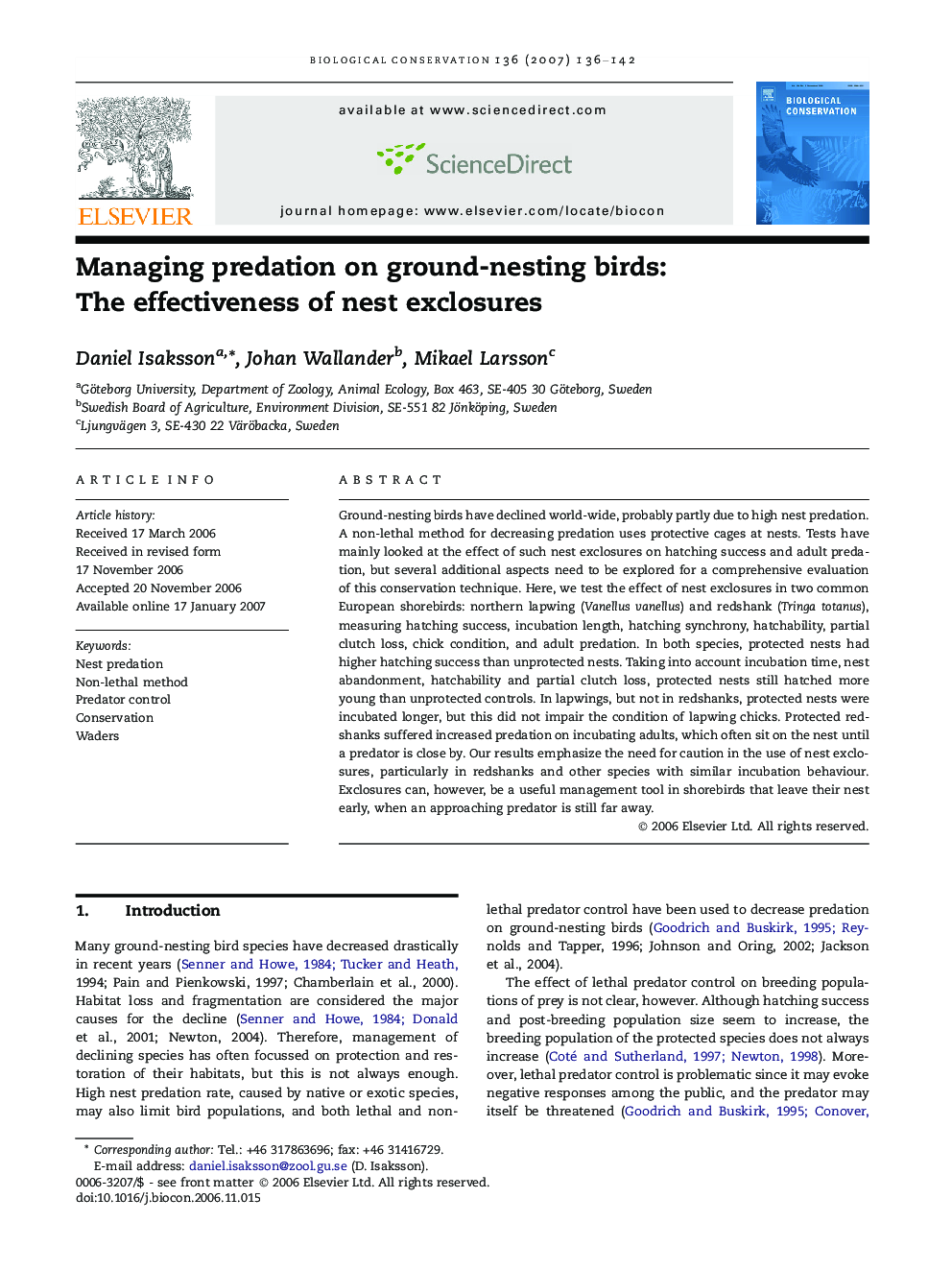| Article ID | Journal | Published Year | Pages | File Type |
|---|---|---|---|---|
| 4387128 | Biological Conservation | 2007 | 7 Pages |
Ground-nesting birds have declined world-wide, probably partly due to high nest predation. A non-lethal method for decreasing predation uses protective cages at nests. Tests have mainly looked at the effect of such nest exclosures on hatching success and adult predation, but several additional aspects need to be explored for a comprehensive evaluation of this conservation technique. Here, we test the effect of nest exclosures in two common European shorebirds: northern lapwing (Vanellus vanellus) and redshank (Tringa totanus), measuring hatching success, incubation length, hatching synchrony, hatchability, partial clutch loss, chick condition, and adult predation. In both species, protected nests had higher hatching success than unprotected nests. Taking into account incubation time, nest abandonment, hatchability and partial clutch loss, protected nests still hatched more young than unprotected controls. In lapwings, but not in redshanks, protected nests were incubated longer, but this did not impair the condition of lapwing chicks. Protected redshanks suffered increased predation on incubating adults, which often sit on the nest until a predator is close by. Our results emphasize the need for caution in the use of nest exclosures, particularly in redshanks and other species with similar incubation behaviour. Exclosures can, however, be a useful management tool in shorebirds that leave their nest early, when an approaching predator is still far away.
